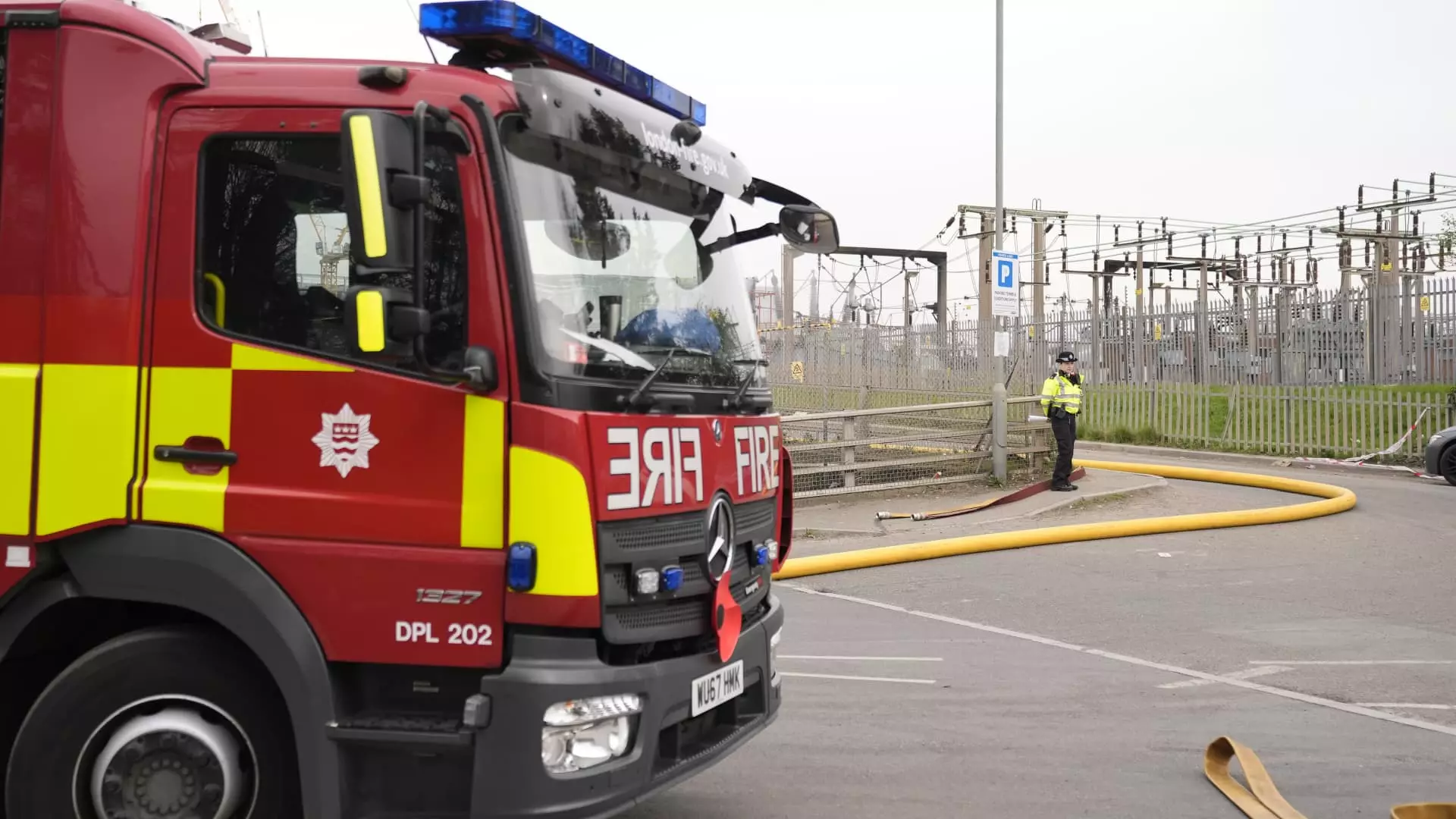The unexpected shutdown of London’s Heathrow Airport due to a fire at an electrical substation has ignited a major conversation about the vulnerable state of the global aviation industry. As passengers faced significant disruptions, experts like Anita Mendiratta have rightly pointed out that this incident reveals more than just the chaos of delayed flights; it unveils fundamental weaknesses within our aviation infrastructure. Mendiratta’s assertion that the rapid expansion of the aviation sector is outpacing its supporting mechanisms is alarming and reveals a crisis waiting to happen.
The nature of the disaster itself—a spark that triggered a power outage—serves as a metaphor for larger systemic failures in our approach to airport operations. With the world’s airports buzzing with an unprecedented volume of passenger traffic post-COVID, can we afford complacency toward the resilience of our critical infrastructure? Mendiratta’s keen observations expose a significant issue: our current aviation framework is simply not robust enough to withstand crises, whether they stem from energy supply failures or growing geopolitical instability.
Reliance on Antiquated Systems: A Call for Reform
One of the most startling revelations from the Heathrow incident is the airport’s singular reliance on a specific power source, branded as a “clear planning failure” by industry leaders such as Willie Walsh of the International Air Transport Association. Think about it: in a world where climate change and geopolitical tension are rising unprecedentedly, relying on a single source for such a crucial operation is not just naive but incredibly dangerous. It raises critical questions about how prepared airports are for the unthinkable.
Heathrow’s claim to have multiple energy sources rings hollow when weighed against the reality that its backup systems failed during an emergency. This is more than just a failure of technology; it’s a failure of leadership and foresight. The aviation industry must prioritize infrastructure reform and seek innovative solutions to fortify energy supply systems if we hope to navigate the turbulent waters ahead.
The Ripple Effects: Beyond Just Delays
Anita Mendiratta warns of far-reaching consequences stemming from the Heathrow incident, claiming that flight cancellations are merely the tip of the iceberg. Indeed, the ripple effects extend into global supply chains, with a staggering 4,000 tons of cargo moving through Heathrow daily. When infrastructure falters, the economic ramifications can be disastrous, exacerbating our already fragile supply lines.
Interestingly, the financial implications of the disruption do not just impact airlines and airports. Investors and shareholders will scrutinize how airlines react to these unforeseen challenges. Delays can undermine customer satisfaction, and how well airlines manage customer care during crises could determine their long-term viability in the industry. An event like this serves as a litmus test and a wake-up call that should be heeded before further calamities unfold.
An Unsustainable Future: The Need for Infrastructure Investment
As aviation rebounds from the pandemic, the latest predictions suggest passenger numbers will continue to soar, with increases projected until at least 2043. But will that growth be sustainable? Mendiratta’s concern that growth outpaces the necessary infrastructural needs is troubling. Airports must not become victims of their own success; the risk of operational collapse looms larger if the necessary upgrades and expansions are not implemented.
Promisingly, there seems to be a growing recognition of the need for sustainable solutions. The industry is increasingly focusing on the adoption of sustainable aviation fuels and innovative technologies to meet decarbonization goals. However, emphasizing ‘green’ initiatives should not cloud our vision of urgent infrastructure reform. We can’t overlook that the foundations of this industry must be fortified before it can pursue sustainability genuinely.
Looking Beyond: Towards a Resilient Future
The Heathrow incident only serves to further underscore how dire the need for infrastructure investment truly is. With governmental pressure mounting for major expansions—like a third runway—the time for action is now. Politicians must grapple with the implications of airport growth alongside the essential framework required to support it. The focus must shift from merely accommodating passenger volume to ensuring safety and resilience in times of crisis.
In wrestling with these realities, we must also ask ourselves—how do we ensure that our aviation systems evolve in ways that prioritize safety over profit? This transition will require a coordinated effort among regulators, airport operators, and airlines, emphasizing the integration of advanced technology, diversification in energy sources, and a commitment to sustainability. The lessons learned from the Heathrow fire must be a catalyst for change rather than just another statistic in the annals of aviation history.



Leave a Reply